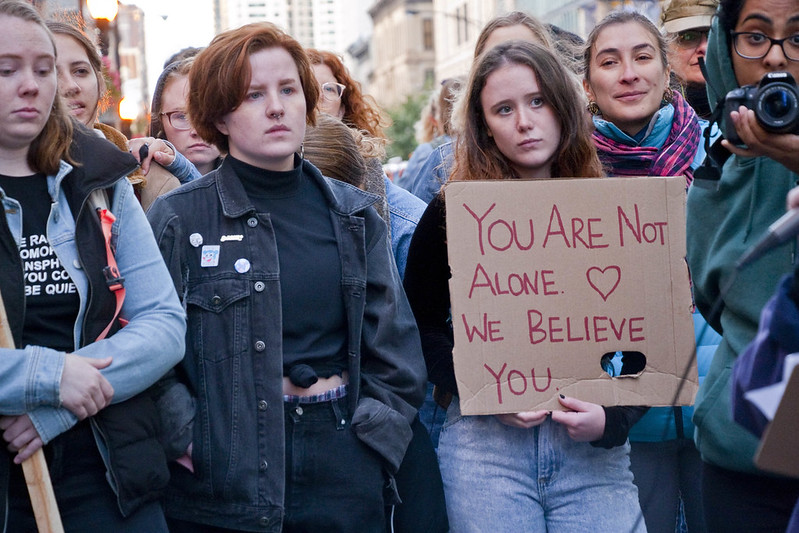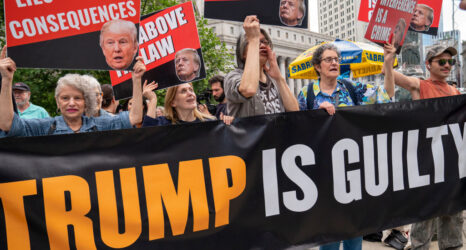“As a survivor, I want to share what we have achieved in establishing sexual assault awareness and supporting survivors, while educating about the work we still need to do.”

Every October since 2017, we have celebrated the continued creativity from activist Tarana Burke, who founded the Me Too Movement back in 2006, and the courage of actress Alyssa Milano, who helped the hashtag go viral by sharing her own experience on Twitter.
As a survivor, I want to share what we have achieved in establishing sexual assault awareness and supporting survivors, while educating about the work we still need to do.
What’s Changed Since #MeToo?
The greatest accomplishment of the #MeToo movement has been the increase of awareness of sexual violence from the greater community.
The truth is, October 2017 was not the first time in history that survivors have come forward to share their often repeated experiences of sexual assault. But with the help of social media, #MeToo was the greatest global acknowledgment by survivors of the prevalence of sexual violence, as well as the most significant acknowledgment from political, educational, and professional systems that it is an issue that needs to be eradicated.
This macro-shift in awareness marked a tipping point in society where the focus shifted from the protection of the perpetrator to the safety of the victim. Industry giants like Harvey Weinstein, Jeffrey Epstein and Larry Nassar were finally held accountable for years of violence against women and children through cancel culture, where they were revoked of their career legacies due to their previously ignored criminal behavior.
The quick cultural shift caused by #MeToo encouraged controversial dialogue at dinner and conference tables, as the collective tried to make sense of the abrupt pendulum shift from a perpetrator to protection-centered culture.
After #MeToo, more survivors sought support to find clarity and healing through the use of rape crisis centers or therapy than ever before.
“When the #MeToo Movement started, we had an influx of clients coming in to receive services that would not have sought services in the past,” said Jannee Campero, a marriage and family therapist.
“The conversation about sexual assault was expanding and people outside of just survivors were becoming interested and wanting to be a part of positive change. On the other hand, we had some clients feel minimized by the movement and expressed resentment that their violent sexual assault experiences were being grouped in with sexual harassment.”
With a stronger global sense of solidarity that served for some survivors as the first source of validation in a culture that has historically invalidated stories of sexual violence, many survivors reported their experiences to the police.
The media quickly picked up on the communal conversation that #MeToo created increasing the representation of the narrative in print and on screen. The survivor stories of famous actresses like Ashley Judd, Olympic gold medalists like Simone Biles, and students abused at prestigious schools like Chessy Prout and Chanel Miller, made news headlines. Television shows and documentaries like Apple TV’s The Morning Show, HBO’s Leaving Neverland, or Netflix’s 13 Reasons Why, Surviving R. Kelly and Unbelievable, sought to address the impact that hidden acts of sexual assaults have on individuals and communities. As an incest survivor, I wept when the NBC show, This Is Us, represented my own story on screen through the character of Zoe (Melanie Liburd) who shares she was raped by her father as a child.
On a systemic level, governmental bodies, businesses and organizations began to shift legislation and policies that historically had benefited the perpetrator over the victim. Some states placed limits on nondisclosure agreements (NDAs) as businesses reassessed policies on how to mitigate workplace harassment. Additionally, efforts were made to pass legislation to improve the testing of rape kits, as well as eradicate or extend the statute of limitations for victims desiring to file civil lawsuits against their perpetrators.
However, even amongst these hopeful cultural, legislative and corporate shifts that have encouraged healing and change on individual and collective levels, there is still so much work that needs to be done.
What Still Needs to Change?
Although many have come to side with the experiences of survivors, many others still question the validity of their stories. The country’s divide over the nomination of Brett Kavanaugh for the Supreme Court after Professor Christine Blasey-Ford accused him of sexual assault is a great example.
Survivors are often assumed to be reporting falsely—though only 2–10 percent of reported cases are proven to actually be unfounded. This shows that the social consequences of believing a survivor over a perpetrator are still too great.
Additionally, survivors are often challenged about why they waited for #MeToo to share their stories. This shows a collective ignorance around the consequences of trauma on memory in a society that has historically privileged the perpetrator.
Jim Hopper, Ph.D., suggests, “Ignorance of how memory works is a major reason why sexual assault is the easiest violent crime to get away with.”
Traumatic incidents at worst can cause memory loss often not resurfacing until much later in the victim’s life. Even if the victim does remember what happened, the brain’s stress responses can make specific details challenging to recall. Additionally, in a culture that has most often accused survivors when recalling instances of sexual assault, many of them have chosen silence in order to protect themselves from further victimization.
Although #MeToo encouraged more survivors to report their cases to the police, sexual violence is still the most underreported crime globally.
Additionally, arrest rates did not increase with the rates of reporting, which is deeply concerning. Still, in only 5 out of 1000 sexual assault cases are perpetrators actually incarcerated.
Furthermore, sexual assault is the highest form of police misconduct after excessive force, making reporting even less likely.
These statistics reinforce the urgency of creating a new trauma-informed justice process for survivors that honors the complexity of power dynamics and traumatic impact on memory, and seeks to keep survivors safe throughout the reporting process and court proceedings.
Additionally, the media coverage of survivor stories often leave the most vulnerable populations out of the conversation. Survivor and disability rights activist Charlotte Lozano shares, “When #MeToo went viral, there was an obvious focus on people who were famous and able-bodied. I didn’t understand why they didn’t talk much about people who are disabled and have been sexually abused like me.”
Experts know that opportunist perpetrators intentionally seek out vulnerable people to abuse because they’re more likely to get away with it, increasing the need for protections for these populations.
Historically the anti-rape movement has supported the safety and healing of wealthy, white, cis women. It has been much more challenging for survivors of color, those who identify as LGBTQ, persons with disabilities, those with economic hardships, men or children to find the same protections and resources.
Violence against Indigenous women is so high that statistics suggest that one in two Native women will experience some form of sexual assault.
The transgender population is also particularly vulnerable. My friend, Kendall Hideaway, expresses both horror and hope: “Being a person of color and transgender, I’m often dismissed or not believed. I’m a survivor of multiple sexual assaults. I reported it to the police once and it was the most traumatic experience ever. But my voice will not be silenced. That is not my shame.”
As an incest survivor, I also noticed that coverage of sexual violence in the home was mostly left out of the media’s conversation of the #MeToo Movement—though activists know that children are the most vulnerable population to sexual abuse and that perpetrators are most often someone who the victim trusts.
According to RAINN, as high as 93 percent of child perpetrators reported to Child Protective Services were known by the victim. According to the CDC-Kaiser ACE Study, remaining in violent environments for too long will cause long-term health problems like Complex-PTSD, which is also seen in Prisoners of War and Genocide Survivors.
We must do more intentional work to increase awareness of sexual violence against vulnerable populations by including their stories in the conversation, while educating the community to better understand patterns of perpetration. It will take a communal response to help us to protect these populations from further violence, while we continue to build and increase availability of recovery resources to better help survivors to heal.
For healing models to be effective, they must focus both on the deconstructive process of violence as well as the reconstructive process of creating systems of safety on individual and systemic levels. Healing individually can’t be successful if survivors are forced to participate in systems that continue to victimize them. Together, we have to exit the trauma cycle on micro and macro scales: stop perpetration patterns, empower victims, and encourage healthy interactions, policies, and legislation that promote the dignity of all people.
As a survivor, I ask for myself and my fellow survivors that you prioritize our safety and yours by joining us in the work required to continue to ensure the success of the Me Too Movement by inviting all into a world that’s sexually safe for the very first time.
Check out Tarana Burke’s Act Too for more ways to get involved.
You may also like:





